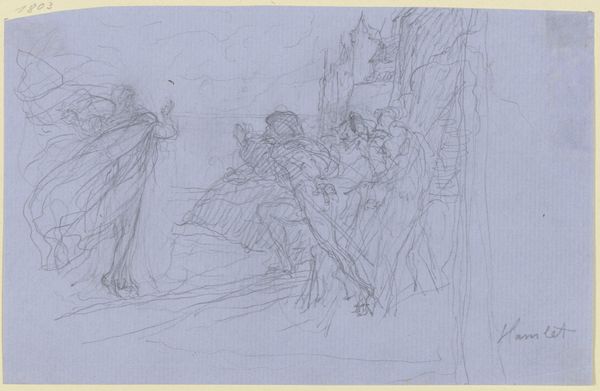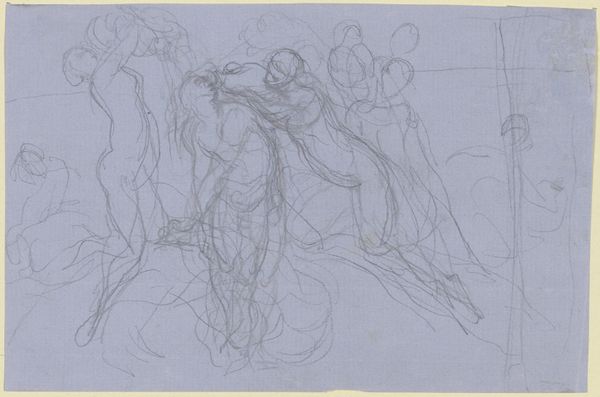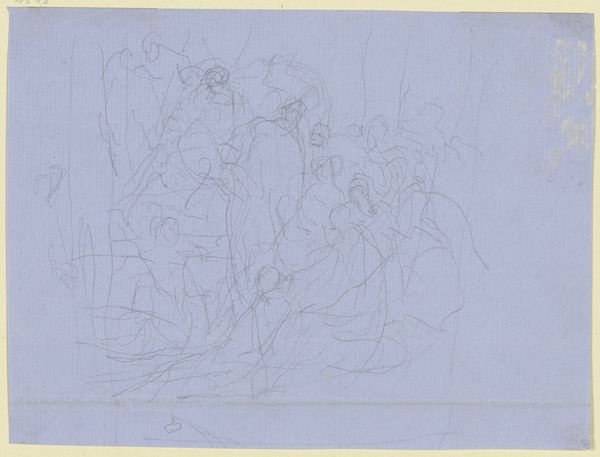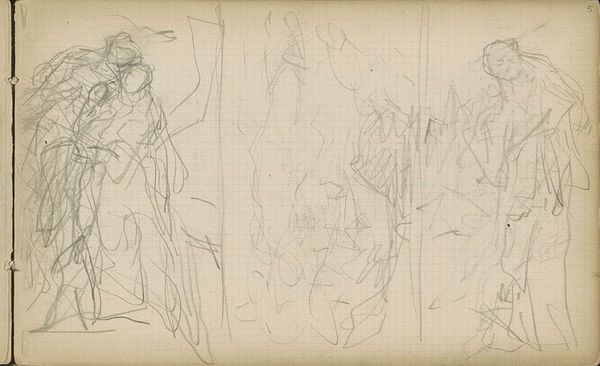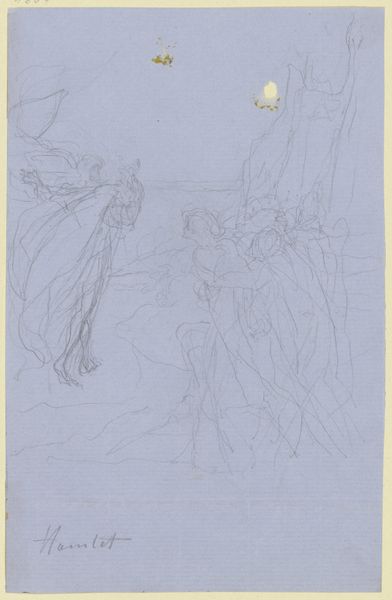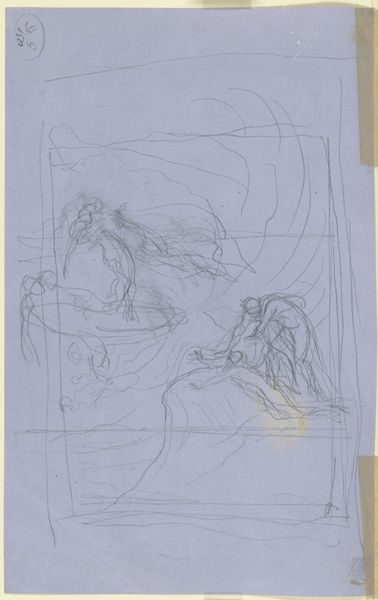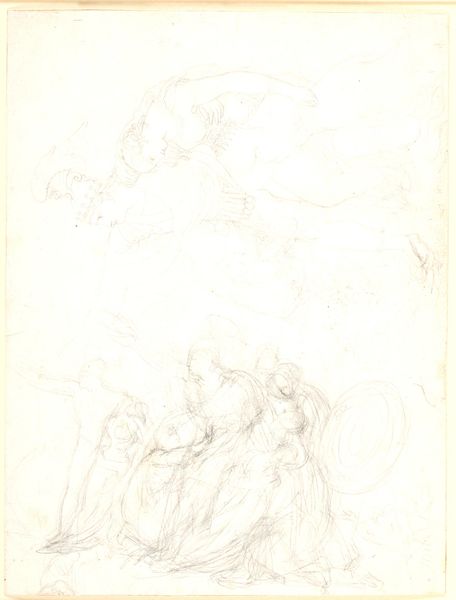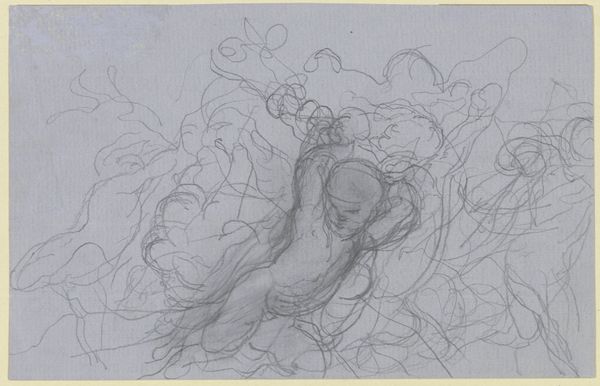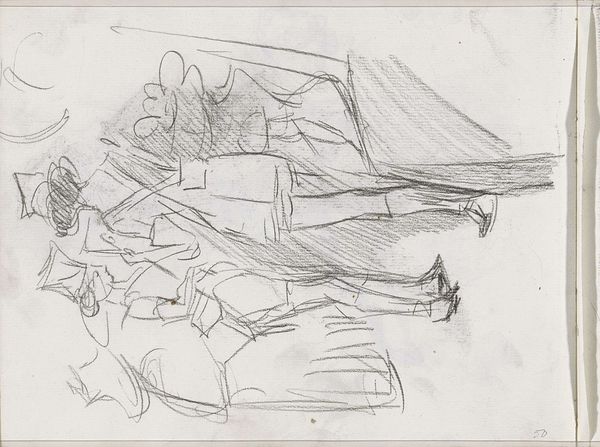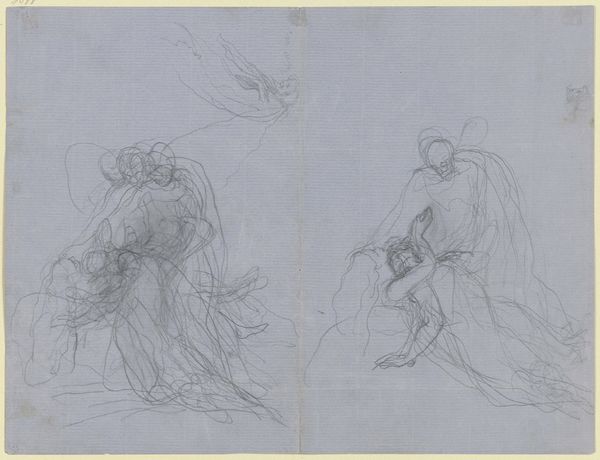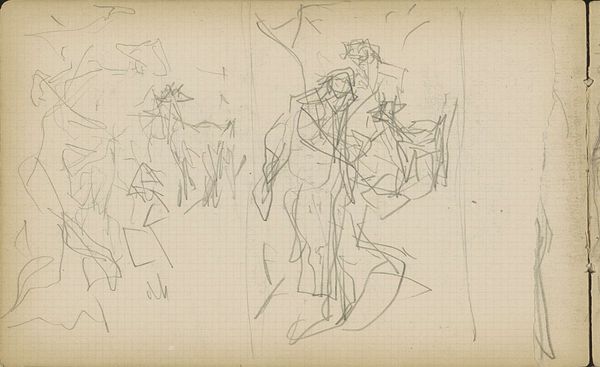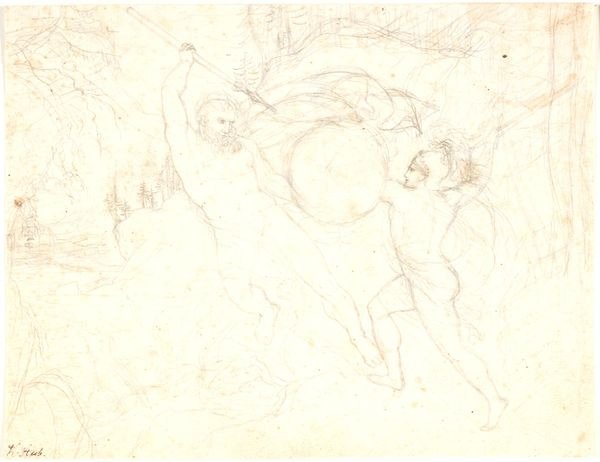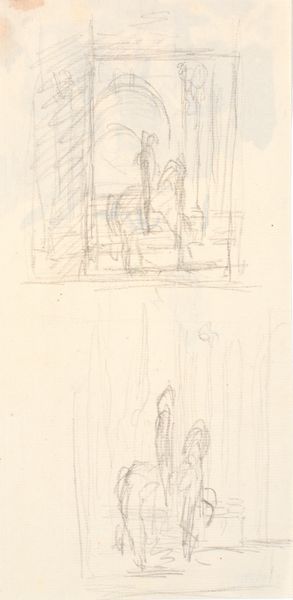
Reitender Tod, die Sense schwingend, vor ihm eine Frau auf dem Pferd liegend, links eine trauernde (_) Gruppe
drawing, paper, pencil
drawing
16_19th-century
narrative-art
death
pencil sketch
landscape
figuration
paper
sketchwork
romanticism
pencil
history-painting
Copyright: Public Domain
Victor Müller sketched "Riding Death, Swinging the Scythe, Before Him a Woman Lying on a Horse, Left a Mourning Group" in pen, depicting a skeletal figure wielding a scythe. The scythe, an ancient tool, evolved into a potent symbol of mortality, particularly during the medieval era. It appears across cultures, from ancient Greek depictions of Chronos, the personification of time, to the Grim Reaper in Western art. Note how the figure's sweeping gesture evokes a sense of inevitable finality, echoing the danse macabre motif found in numerous artistic traditions. Consider also the mourning group, their postures mirroring expressions of grief found in classical laments and religious scenes of mourning. This visual language taps into a shared human experience of loss, a collective memory of sorrow that transcends time. The terror and grief are palpable, engaging us on a deep, subconscious level. The enduring power of such symbols lies in their ability to resonate with the human psyche, bridging past and present.
Comments
No comments
Be the first to comment and join the conversation on the ultimate creative platform.
